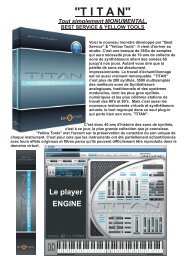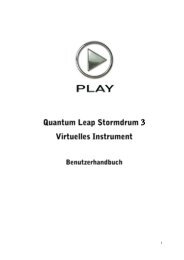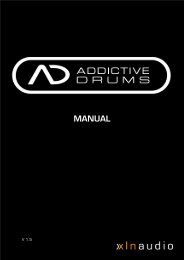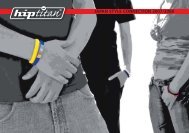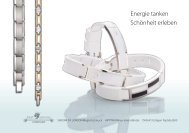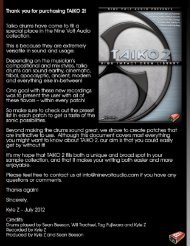PDF Manual-Virtual Bouzouki
PDF Manual-Virtual Bouzouki
PDF Manual-Virtual Bouzouki
Create successful ePaper yourself
Turn your PDF publications into a flip-book with our unique Google optimized e-Paper software.
D-string<br />
Glissando functionality:<br />
There are two keyswitches for glissando. G#1 triggers glissando from high to low and A1<br />
triggers glissando from low to high. Both keyswitches include two velocities where the low<br />
velocity is glissando TO the specific note played and the high is glissando FROM the specific<br />
note played. When played fast and with the higher velocity the typical bouzouki effect sounds.<br />
Fret functionality:<br />
One and the same note can often be played on multiple different strings on the real instrument.<br />
Whereas many other stringed instrument sample libraries only includes samples for the lower<br />
fret numbers on most strings, we have recorded notes throughout the full length of the strings<br />
in order to capture the timbral differences between these alternative playing positions.<br />
This gives you increased flexibility and realism.<br />
MIDI CC#1 - normally mapped to the modulation wheel by default - is used to set the left hand<br />
playing position along the neck of the bouzouki. Low values gives you samples played on low<br />
fret numbers and high values gives you samples played on the higher fret numbers. When you<br />
play a note on your keyboard the string on which the fret corresponding to this note is closest to<br />
the current playing position is chosen. Hence, the playing position implicitly determines the<br />
choice of string and thereby also which sample is to be played.<br />
Even if the note you play on your keyboard cannot be played at the exact playing position set by<br />
MIDI CC#1, the best match will be used.<br />
MENU<br />
MENU



